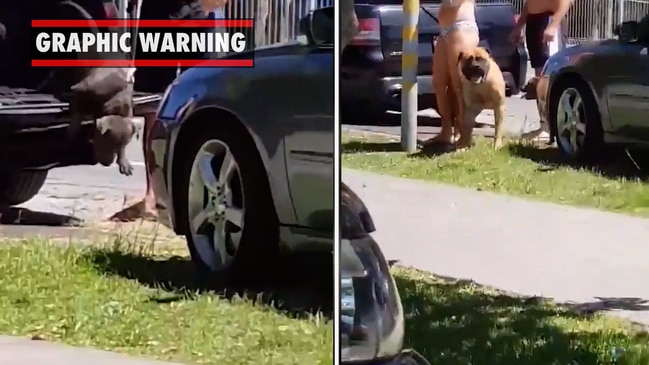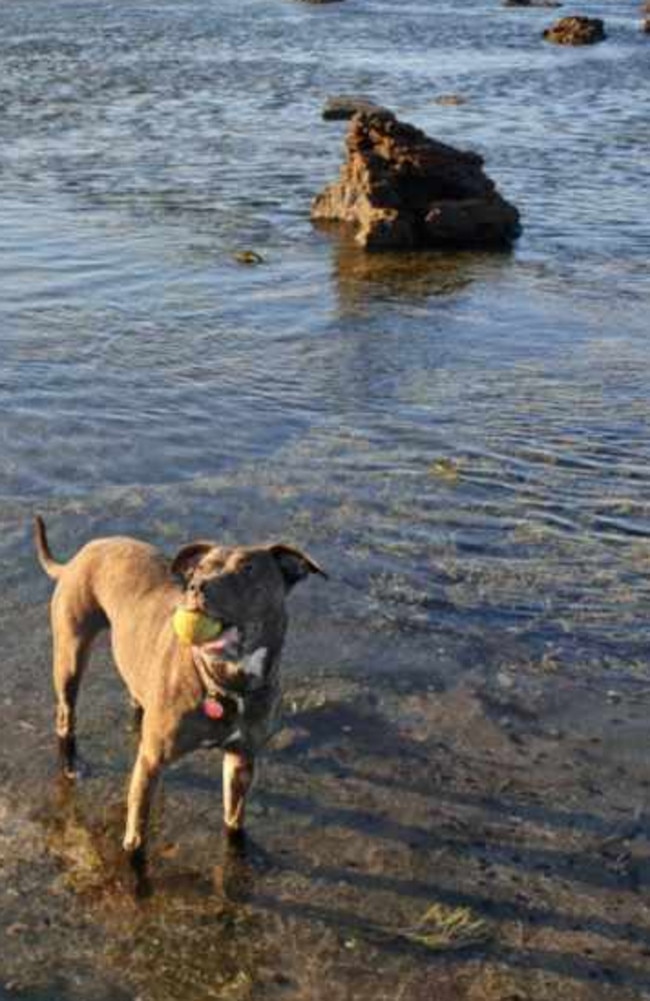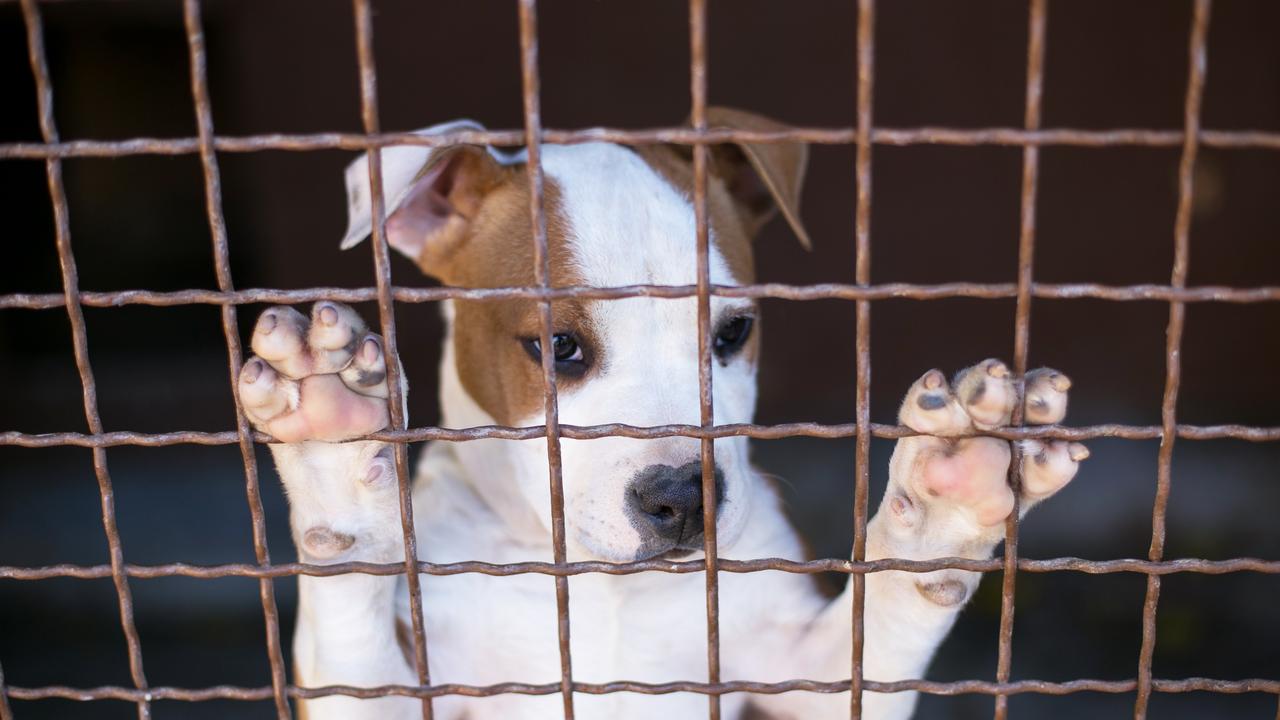‘Like paedophiles’: Animal rescuers lift lid on ‘long cultivated’ dog sex abuse
Rescuers have lifted the lid on the most depraved type of animal abuse, and statistics show the heinous crime is more common than you’d think. Warning: Graphic

WARNING: Graphic, distressing
Animal rescuers have lifted the lid on the most horrific type of animal abuse, and statistics show the heinous crime is more common than you’d think.
Jacki Largo, the founder of emergency animal respite care network Paws And Recover told news.com.au sexual abuse of dogs is a “long cultivated” process that happens in secret, in people’s homes. She said abusers are “like paedophiles”.
Ms Largo has rescued staffy, Stella, who was at a facility in Canberra. She’d been found with a stick forced into her vagina before she was taken into care.
Stella was struggling to cope at the rescue facility, and had lost her ability to function. Ms Largo said the dog “had completely shut down”.
She said the rescue facility was considering euthanising the dog, because she was coping so poorly, and when they first approached her was so crippled with fear she lost control of her bowels.
“It’s a bit like paedophiles. It’s done in the privacy of people‘s homes. It’s a long, cultivated process,” Ms Largo said.
“I’m sure the people who are sexually abusing dogs, they’re doing it in their own homes.”
After being rehabilitated, they attempted rehoming her. But the attempt to move her into a regular household was unsuccessful, as Stella lacked confidence and would regress and “shut down”.
Ms Largo said Stella is now “happy” living with her but is unlikely to move onto another home.
RELATED: Man jailed for sex act with dog


ABUSE CAN ‘CHANGE’ DOG’S PHYSICAL ANATOMY
“It’s not rare,” said Rachel Haig, also from emergency network Paws and Recover.
Ms Haig said she knows of three different dogs who had been sexually abused, and said rescue organisations work hard to keep their identities anonymous.
“The dog abusers will seek out previously abused dogs, and try to get them out of the pound to continue the abuse,” she said.
“If a dog has been abused, they have been conditioned from a young age.
“They have to be taken to the vet. In some cases the anatomy has been changed.
“In some cases it has been filmed.”
Ms Haig said physically rehabilitating the dog can be a difficult process, and can involve stitches, and creams. The dogs often suffer severe neglect, and “they have to learn how to socialise”.
She said in her time working as a dog rescuer she’s come across three severe cases of animal sexual abuse.
In one of those cases a friend of the alleged abuser had reported the case after discovering video evidence of the alleged crime.
Ms Haig was hopeful for the outcome of abused dogs if they are rescued and given adequate care.
“I haven‘t seen one (abused) dog that’s not been a little angel,” she said.
RELATED: Puppy farms raided after pregnant dog dies

STATISTICS SHOW POLICE REPORTS OF BESTIALITY IN NSW
The NSW Bureau of Crime Statistics and Research (BOCSAR) provided a report of the number of incidents of bestiality reported by the NSW Police Force over a five-year period when requested by news.com.au.
Between July 2015 and June 2020, a total 57 incidences of bestiality were recorded in the state.
In the 2015/16 financial year, 21 incidences of bestiality were reported, nine separate attacks were recorded in both 2016/17 and 2017/18, seven in 2018/19 and 11 in 2019/20.
Previous BOCSAR figures, provided to news.com.au by the RSPCA show 68 separate incidents of bestiality were recorded by NSW police between April 2007 and March 2016.
Of the 68 recorded incidents, 25 occurred within the Greater Sydney region, while 43 happened in regional NSW. Some 19 of the incidents happened in the 12 months to March 2016.
NSW Police declined to comment on the statistics when contacted by news.com.au.
ABUSED DOGS CAN BE ‘FEARFUL’ AND SUFFER LONG TERM
RSPCA NSW Chief Veterinarian Dr Liz Arnott told news.com.au the long term psychological effects of abuse to an animal were still not completely understood, but said abused dogs have been shown to be more fearful of people and can show aggression, among other behaviours.
“Animals that have been impacted by neglect, physical or emotional abuse exhibit behavioural changes and signs of difficulty coping with regular environments and challenges,” Dr Arnott said.
“Although the long term psychological effects of abuse on animals are incompletely understood, abused dogs have been shown to have significantly higher rates of aggression and fear directed toward people and dogs, excitability, hyperactivity, attention-seeking behaviours, barking and repetitive behaviours.”
She said the behaviours were a problem “because they indicate that the animal’s wellbeing is compromised and that they may be suffering negative emotions such as anxiety and distress”.
“In addition, it can present significant problems for their rehoming as they require expert knowledge to assess and treat and intensive ongoing support.
“Extensive resources are invested in trying to improve the lives of abused animals and to help them develop the ability to cope with the world they live in.
“Nonetheless, it can be difficult for owners to manage them safely and successfully and for those involved to ensure that their quality of life will be acceptable in the short and long term.”




